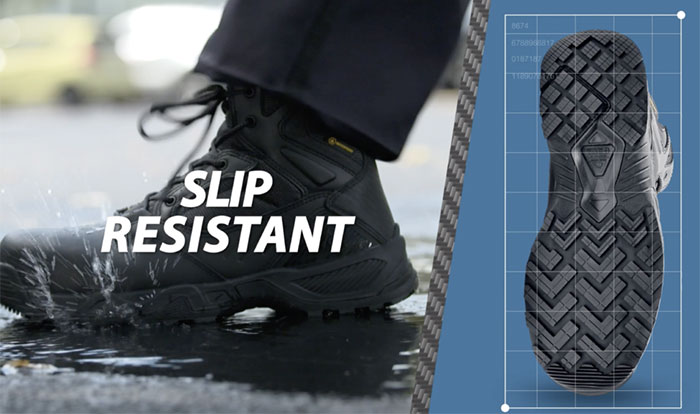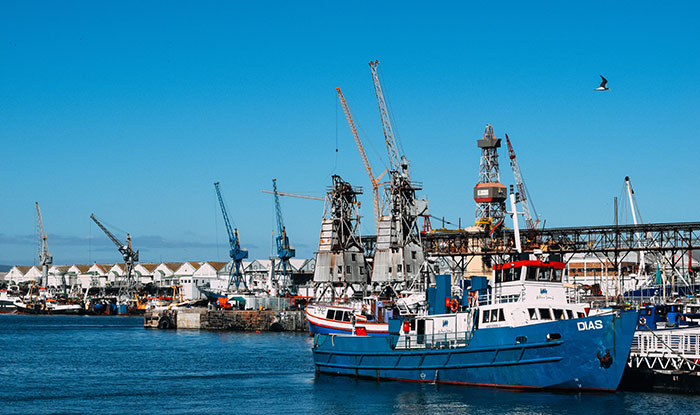Minimizing Slip and Fall Accidents During the Winter
Slip and fall accidents in the workplace occur year-round. But during the winter months when the temperature begins to drop, the snow starts to fall and the pavement ices over, the need for non-slip shoes in wet and icy conditions becomes an additional safety factor and without them increases the likelihood of a tragic and potentially fatal incident. In 2016, the U.S. Bureau of Labor Statistics reported 20,520 workplace slip and fall injuries involving ice, sleet or snow with 28% of those resulting in more than a month of missed work days.
As an employer, understanding how ice build-up on the walkways, parking lots and outside break areas surrounding the building can contribute to safety hazards on the work floor is critical. An awareness of the additional workplace risks that arise during the winter will enable you to proactively and effectively combat potential dangers, protecting both your employees and bottom line. With the proper safety program, tools and techniques, you can reduce cold weather induced slip and fall injuries and protect your team.
Consider the following winter slip and fall resources and precautions to minimize on-site accidents this winter.
Identify Potentially Hazardous Areas
In the cold and rainy winter months, employees often track ice and snow from outside upon entering the building. Consequently, common areas that wouldn’t typically be considered “hazardous” become potential breeding grounds for accidents. There is also the possibility that ice, snow and water will be trailed onto the floor itself which could result in a fatal injury.
The identification of potentially hazardous, wet areas and the proper placement of signage in entryways, exits and other high-traffic areas is critical. These simple efforts can help you alert employees and reduce accidents. Additionally, placing slip-resistant floor mats in or near wet areas at entrances and exits can help mitigate these climate-related risks. With the average cost per slip or fall totaling over $24,000, taking the time to identify areas that could become wet and dangerous could save your company a significant amount of time and money.
Create a Proactive Safety Plan
When it comes to workplace accidents, no one thinks one will happen to one of their employees – until it does. For this reason, many companies are not proactive and lack a strong safety plan (or simply don’t have one). The problem is, when an accident occurs, they are usually unprepared and frantic and have no idea what to do next.
A strong, proactive plan considers all possible safety risks and hazards and then presents clearly defined guidelines, responsibilities and expectations for how they can be avoided. Although ice and snow do not pose a safety concern all year, the dangers that they present should still be accounted for in your action plan.
Some of the winter-related precautions that can be addressed in your safety plan include:
- Walk on designated paths and walkways that have been cleared of ice and snow
- Wipe your feet on the slip-resistant mats upon entering the building
- Mark wet areas with signage
- Clean up spills and wet areas inside immediately
- Provide PPE footwear such as ice cleats to outdoor workers
Require Slip-Resistant Footwear
The proper footwear is an important safety tool for your team all year. Slip-resistant shoes, such as those offered in Shoes for Crews’ Corporate Safety Programs, are key in maintaining traction on slick snow, icy or wet surfaces. During the winter, non-slip shoes for snow and ice work shoes can be used to protect against accidents in addition to the normal daily risks your team faces.
Companies that require employees to wear slip-resistant footwear see up to an 80% reduction in slip and fall costs each year. As the number of winter-related slip and fall accidents rises each year, enforcing a protective footwear policy is a critical step in protecting your employees from the dangers that are created by ice, sleet, and snow.
Winter months bring the accumulation of ice and snow in many different regions. This icy and slippery build-up increases the risks of accidents both inside and outside of the building, creating an even greater need for companies to have a proactive safety plan. By taking a few simple precautions, you can minimize the occurrence of work-related slip and falls this winter season – and beyond!
Read the Slips, Trips, and Falls whitepaper to learn more about mitigating employee risk in the workplace.
Employees and Your Bottom line.
Don't Forget To Share This Post!

The Key to Slip-Resistant Safety Shoes
Not all slip-resistant shoes for workers are equal. Find out how genuine slip-resistant footwear carries a high Coefficient of Friction (COF) score.

6 Essential Leadership Tips for Executive Chefs
Leadership matters in any profession. Here are 6 essential leadership qualities executive chefs should possess to make their kitchens the best they can be.

Top 10 Loading Dock Safety Tips
Loading dock areas are notorious for their numerous safety hazards. Sidestep risk to your workers by following these 10 loading dock safety tips.